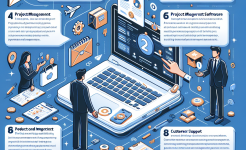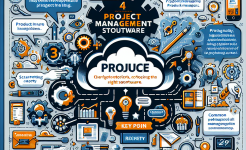The Technology Review (TR) process is a crucial part of the Integrated Product Development (IPD) framework. It serves as a checkpoint to ensure that the technology being developed or incorporated into a product meets the required standards and aligns with the overall product strategy. By conducting thorough TR reviews, companies can identify potential risks, make informed decisions, and avoid costly mistakes down the line. This article will analyze five key steps in the TR review process, shedding light on how each step contributes to the success of product development.
Understanding the Objectives
The first step in the TR review process is to clearly understand the objectives. This involves defining what the review aims to achieve. Is it to assess the maturity of a new technology? To determine its compatibility with existing systems? Or perhaps to evaluate its potential impact on the product's performance and cost? By having well - defined objectives, the review team can focus their efforts effectively.
When setting objectives, it's essential to consider the broader product goals. For example, if the product is targeting a high - end market segment that values cutting - edge features, the TR review might focus on the technological superiority of the new component. On the other hand, if cost - effectiveness is a primary concern, the review could center around the cost - benefit ratio of the technology. Additionally, the objectives should be specific, measurable, achievable, relevant, and time - bound (SMART). This ensures that the review process has clear benchmarks to measure against.
Moreover, understanding the objectives helps in assembling the right team for the review. Different objectives may require different areas of expertise. For instance, if the review is about the security aspects of a new technology, experts in cybersecurity will be needed. By aligning the team's skills with the objectives, the review can be more comprehensive and accurate.
Gathering the Right Information
Once the objectives are clear, the next step is to gather the necessary information. This includes both technical and non - technical data. Technical information might cover details about the technology's specifications, performance metrics, and design architecture. For example, if the technology in question is a new battery for a mobile device, the review team would need to know its capacity, charging speed, and lifespan.
Non - technical information is equally important. This could involve market research data, such as customer preferences and competitor offerings. Understanding what customers are looking for in terms of technology can help in evaluating whether the new technology will be well - received. Additionally, information about the regulatory environment is crucial. For example, in the medical device industry, new technologies must comply with strict regulatory requirements.
The sources of information can be diverse. Internal teams, such as R&D, engineering, and marketing, can provide valuable insights. External sources, like industry reports, academic research, and technology providers, can also offer relevant data. It's important to ensure that the information is reliable and up - to - date. Outdated or inaccurate information can lead to wrong conclusions during the review.
Conducting a Thorough Analysis
With the information in hand, the review team can then conduct a thorough analysis. This involves evaluating the technology from multiple perspectives. Firstly, a technical analysis should be carried out to assess the feasibility of the technology. This includes examining whether the technology can be integrated into the product design without major complications. For example, if a new display technology is being considered for a laptop, the analysis would look at its compatibility with the existing motherboard and power supply.
Secondly, a risk analysis is essential. Identifying potential risks early on can help in developing mitigation strategies. Risks could include technological uncertainties, such as whether the technology will perform as expected in real - world conditions. There could also be supply - chain risks, like the availability of key components. By quantifying and prioritizing these risks, the review team can make more informed decisions.

Finally, an economic analysis should be conducted. This involves evaluating the cost implications of the technology. This includes not only the initial investment but also the long - term operational costs. For example, a new manufacturing technology might require a significant upfront investment but could lead to cost savings in the long run through increased efficiency. The economic analysis helps in determining whether the technology is financially viable for the product.
Making Informed Decisions
Based on the analysis, the next step is to make informed decisions. The review team needs to weigh the pros and cons of the technology and decide whether to proceed with its adoption, modify it, or reject it altogether. If the technology meets all the objectives, has acceptable risks, and is economically viable, the decision might be to move forward with its integration into the product.
However, if there are significant risks or if the technology does not align with the product goals, the team may choose to modify the technology or look for alternatives. For example, if a new software technology has security vulnerabilities, the development team might work on patching these issues before considering its use. In some cases, if the risks are too high or the benefits are not substantial enough, the decision could be to reject the technology.
Making informed decisions also involves considering the impact on the overall product development schedule. If adopting a new technology will cause significant delays, the team needs to balance this against the potential benefits. Additionally, communication is key during this stage. The decision - making process should be transparent, and all stakeholders should be informed of the reasons behind the decision.
Follow - up and Monitoring
The final key step in the TR review process is follow - up and monitoring. Once a decision is made, it's important to track the implementation of the technology. This includes monitoring its performance in the product development process. If the technology was adopted, is it performing as expected? Are there any unforeseen issues that arise?
Monitoring also extends to the risk mitigation strategies. If certain risks were identified during the review and mitigation plans were put in place, it's essential to ensure that these plans are being executed effectively. For example, if a supply - chain risk was identified and a backup supplier was arranged, the follow - up should confirm that the backup supplier is reliable and can meet the requirements.
Moreover, the market and technological landscape are constantly evolving. Therefore, continuous monitoring is necessary to ensure that the technology remains relevant. Newer technologies may emerge that could offer better alternatives. By staying vigilant, the product development team can make timely adjustments and ensure that the product remains competitive in the market.
Conclusion
In conclusion, the TR review process is a complex but essential part of product development. The five key steps - understanding the objectives, gathering the right information, conducting a thorough analysis, making informed decisions, and follow - up and monitoring - all play crucial roles. By clearly defining the objectives, the review team has a clear direction. Gathering accurate and comprehensive information provides the foundation for a detailed analysis. The analysis helps in identifying the strengths, weaknesses, opportunities, and threats associated with the technology. Informed decisions based on this analysis ensure that the product development moves forward in the right direction. And finally, follow - up and monitoring guarantee that the technology performs as expected and remains relevant in a dynamic market environment.
Companies that invest time and resources in a well - structured TR review process are more likely to develop products that meet customer needs, are technically sound, and are commercially successful. By mastering these five key steps, organizations can enhance their product development capabilities, reduce risks, and gain a competitive edge in the marketplace. The TR review process is not a one - time event but an ongoing cycle that should be integrated into the overall product development lifecycle to ensure continuous improvement and innovation.
ARTICLE TITLE :Analysis of 5 key steps in TR review process ,AUTHOR :ITpmlib

















